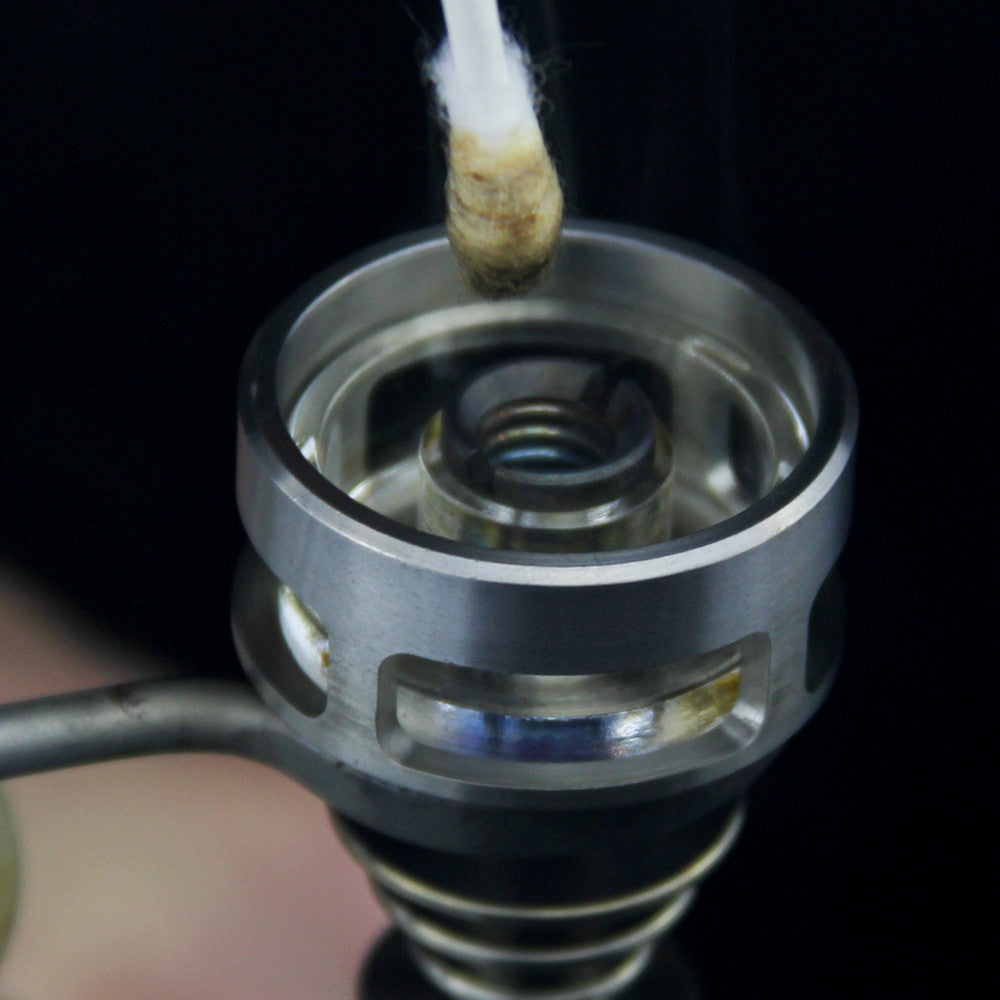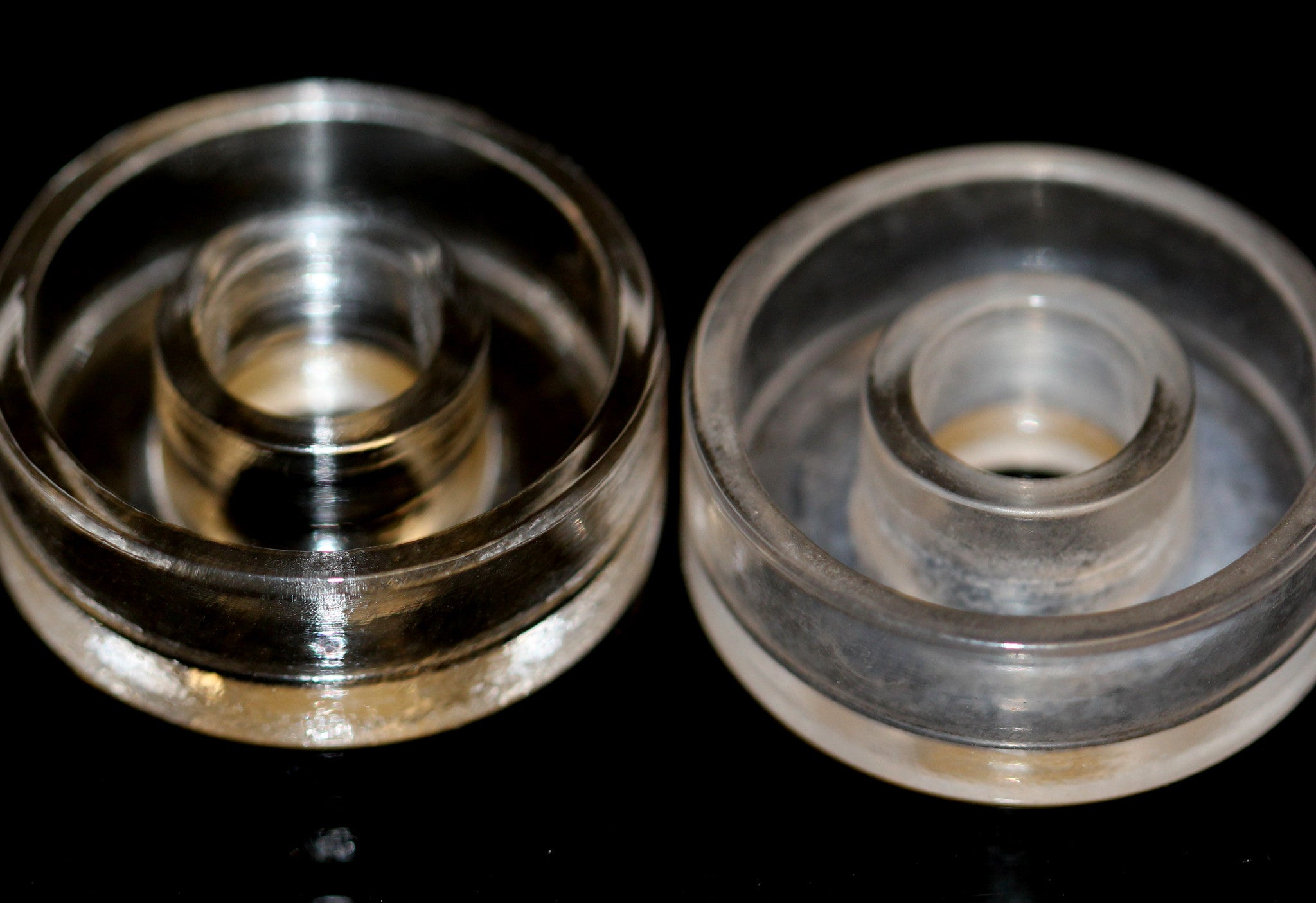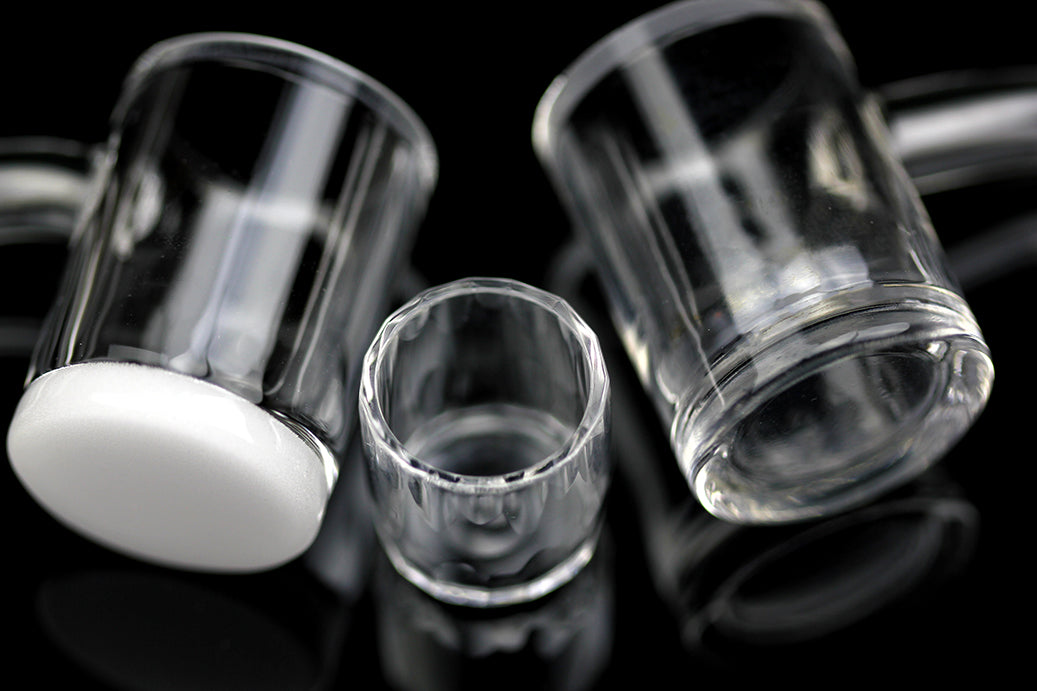
How to keep a Quartz E-Nail Clean
Quartz Maintenance
If you are of the mindset that you have to "waste it to taste it", then you won't be disappointed that a similar method applies to keeping a quartz e-nail nail clean.
By now, you should know that oil is most easily removed from any substrate while it is still in a liquid form. It is much harder to remove once it has completely vaporized leaving behind a solid crust layer. Traditional torch nails are easily kept clean with proper use of a timer and cotton swabs because the oil is left in a liquid state which can be removed before re-firing.
E-nails are a little more difficult to keep clean as the heat being supplied is constant, and it therefore requires the user to quickly remove the liquid oil from the dish with a cotton swab before it has to opportunity to fully vaporize. Which brings us back to the whole "waste it to taste it" mantra. Some consumers may see the effort to wipe up liquid oil as wasting product. This is where opinions will differ on where a dab is considered finished. It is not my place to decide for anyone, but if you would like to keep your quartz enail clean, here are some tips on how to do just that.
1. Operate at a temperature that produces vapor when capped, and still leaves the oil in a liquid state in the dish after the user is complete.


2. Quickly cotton swab out any liquid oil immediately after the carb cap is removed and the user is complete.


3. It's tempting to use the carb cap for several breaths until the oil is completely vaporized. While this is a great way to get the most out of your oil, it will also result in the crust layer developing. With casual use it is best to limit a user to 1 - 2 breaths, before using the cotton swab to wipe the dish. This will vary and depends on the volume of oil placed in the dish, but with a casual dab, 1 - 2 breaths should be fine.
4. If you can see vapor rising from the dish this is usually a sign that oil is still on the dish somewhere that needs to be removed.
5. Timing is everything. Only this time instead of waiting to take your tab, you just need to focus on quickly removing the oil immediately after your dab.
Ok but I failed to q-tip it diligently enough so now what?
Once the crust layer has developed, the easiest way to remove it is by removing the quartz dish from the nail and using a torch to flame polish the outside of the walls until the contaminants have burnt away. While this is the easiest way to do it, it is not the best as torching quartz with contaminants on the surface promotes devitrification in the quartz glass. You can read more about devitrification in our other blog post here. Since this method produces devitrification over time, it is best to keep the dish clean as much as possible using the steps listed above and to use this cleaning method as little as possible.


